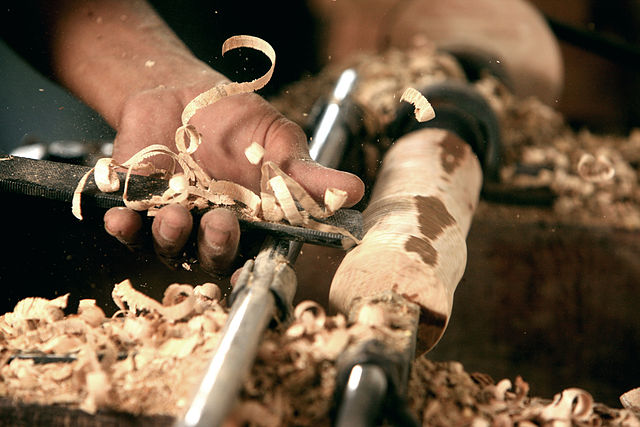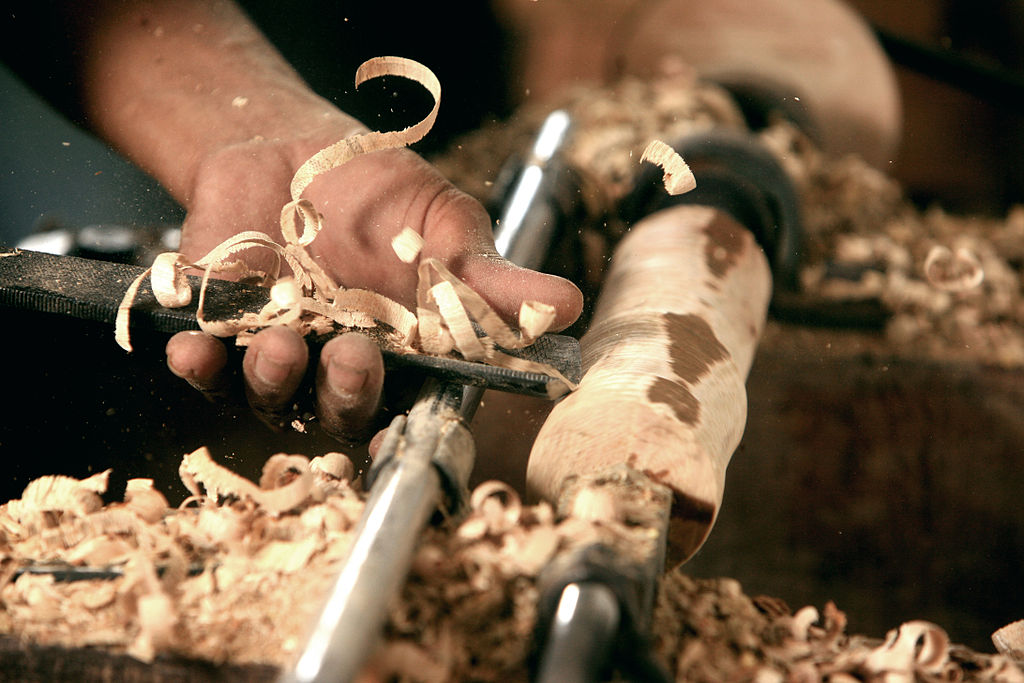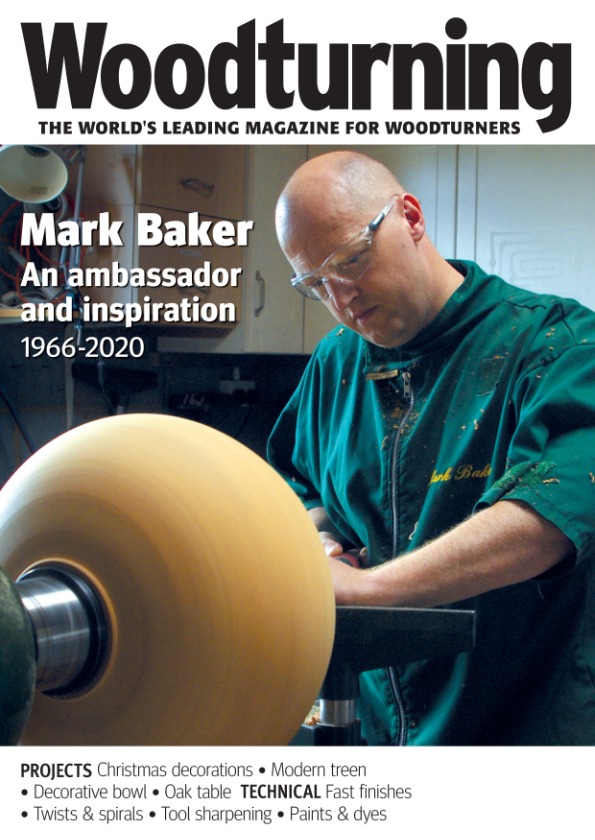
There are many different types of woodturning-bowl scrapers. You have the option of round nose scrapers or shaped bowl scrapers. You can use each of these tools for different types of work. Keep reading for more details. And, remember to practice with them! You'll be glad that it was! How can you determine which type of cigarette is best for your body?
Shaped bowl scrapers
A shaped bowl cutter is an excellent tool to help you get started in woodturning. The burr and the gouge are two of the edges of a scraper. Both edges have different functions and must be used correctly. As it is used for cutting, the burr edges are used first. You will need to practice cutting on a piece and scraping on another before you move on to the next.
A round nose-scraper is an additional useful tool. The round nose scraper is slightly higher than a normal scraper, so use it carefully. Although it can be used horizontally, it is better to angle it downwards for more control. You must not scratch the bowl wall higher than its centerline. It is a very sharp scraper, so use it carefully! And make sure you have sharp scrapers!
Round nose scrapers
Even though round nose bowl scrapers for woodturning are the best tool to create smooth surface lines, these are not always the best. Although it is designed to replicate the cutting action a bowl gouge uses, this scraper has its own characteristics. The scraper's angle of approach and shape differ from the standard round nose scraper. These are some tips for choosing the right type of scraper:
A round nose scraper is useful for making smooth curves inside the interior of a bowl or platter. It has a 12mm blade width, which leaves a beautiful finish inside the bowl. This Sheffield-made scraper has M2 high speed steel blades which can hold their edge at high temperatures. Included is a 300mm-dyed beech handle. This scraper works well for all levels of turner, from the beginner to the expert.
Negative rake Scrapers

You have come to the right spot if you're searching for a woodturning blade that's specially designed to smoothen inner curves. This premium M-42 cobalt high speed steel makes it an excellent choice for woodturning. The negative rake profile is easier to use with a 20deg angle for the top and 70deg for the bottom. This type of scraper is particularly useful if you're turning a dense hard wood or turning plastic.
These scrapers are great for turning wooden bowls. These scrapers have been specially made to smoothen interior surfaces of bowls and other parts. They're particularly helpful for composite materials like maple and Ash, which can prove difficult to turn using traditional sharpened steel tools. Negative rakes are also ideal for turning bowls made of composite materials.
Shellfish scrapers
You can avoid mistakes by using a shellfish cutter while woodturning to improve the quality of your final product. These scrapers come with a variety of sizes and can be useful for both finished and raw pieces. Below are some of the most well-known ones. A good scraper should be durable and produce fine shavings.
Diamond scrapers

The essential tool for any workshop is the diamond bowl-scraper. They are a great choice for cutting wood because of their tapered shape and rounded edges. You'll find them in a variety shapes, including squares, circles, and domed. You can also get scrapers for the interior of your bowls and form scrapers for making captive rings. You may be surprised to find out that they're so versatile! Do you believe this? This article will help you find out.
Designed to work on both large and small pieces of wood, Diamond bowl scrapers are a must for any turner. They are made of high-speed stainless steel with a brass-ferruled or waspwaisted handle. They are lightweight and can also be used as a toolrest. They measure one-half to two-and-a-half inches wide and 21 inches in long. These scrapers are also used to add decorative chatter marks to your turned pieces.
FAQ
How can a woodworker start making money?
Many people want to open an online furniture business and are learning how to build it. You don't have to sell on Etsy if your furniture is just beginning. You could sell at craft fairs or local events. You could also offer workshops to help others learn how to make their own furniture. You might be able to offer services like remodeling homes or making custom pieces for clients if you are a skilled carpenter.
How do you know which tools are the best for you?
It helps to reflect on your needs and preferences before you shop for tools. Do you prefer metal or plastic handles What size of nails and screws do your hands use most? Are you comfortable with power tools, or would you rather use hand tools?
Where can I locate free woodworking plans
To find free woodworking plans, you don't have to buy any magazines or books. All you need to do is search Google. Enter "free woodworking", and you will see hundreds upon hundreds of websites offering free plans.
What is the minimum amount I will need to start?
Each project is unique so there aren’t exact numbers. These are the factors that will give you an idea of how much you'll need.
-
Materials cost
-
Tools and equipment
-
Time spent on the project
-
Hourly rate
-
How much profit do you expect to earn
-
Whether you plan to hire help
Start small, if possible. You can make simple boxes or picture frames if you're just getting started. You will gain more experience and be able to tackle larger projects.
What is the difference between plywood and particle board?
Plywood is made of layers of wood that are pressed together under pressure. Plywood can come in many thicknesses and is used for flooring and cabinets. Particle board is made up of sawdust mixed in resin, then compressed into large pieces. It is used primarily for home improvements. Both types of boards can be easily cut and are durable.
Statistics
- Average lumber prices rose about 600 percent between April 2020 and May 2021. (familyhandyman.com)
- Woodworkers on the lower end of that spectrum, the bottom 10% to be exact, make roughly $24,000 a year, while the top 10% makes $108,000. (zippia.com)
- If your lumber isn't as dry as you would like when you purchase it (over 22% in Glen Huey's opinion…probably over 10-15% in my opinion), then it's a good idea to let it acclimate to your workshop for a couple of weeks. (woodandshop.com)
- The U.S. Bureau of Labor Statistics (BLS) estimates that the number of jobs for woodworkers will decline by 4% between 2019 and 2029. (indeed.com)
External Links
How To
How to stain wooden surfaces
Staining wood is the process of applying chemicals to the wood's exterior, which alters its color. This chemical reaction causes the wood color to change from white and brownish red. Although oak is the most popular type of wood to stain, there are many other types that can be used.
There are many methods to apply stain to wood surfaces. You can mix the stain with a solvent, such as turpentine, and spray it onto the wood. Other methods use a solution of water and dye applied directly to the wood. You can also mix stains with varnishes or paints so that they become part the finish coating.
Preparing your wood for staining is the first thing to do. Clean the wood to get rid of any grease, dirt or other substances that might be detrimental to the stain's application. Sanding the wood removes scratches and imperfections. The next step is to determine the type of stain you would like to use. There are two main kinds of stains available: non-penetrating stains and penetrating. Penetrating and non-penetrating wood stains penetrate deeper than other types, making them perfect for dark colors like mahogany. Non-penetrating stains work best with light colors like maple.
Once you have decided on the stain type that you want, get your tools ready. Because you can spread the stain evenly with a paintbrush, it is ideal for applying them. A few rags are also handy to clean up any spillages after you have finished painting. If you intend to mix the stain yourself you will need enough containers to hold all the components.
After you have prepared your materials, clean the area you intend to stain. To remove dirt and dust, use warm water and soap. Use a dampened sponge and warm water to clean the entire piece. Take care to remove all debris and dirt, especially if you are planning on staining darker wood.
Apply the stain next. Start at one end of the piece of furniture and brush or spray the stain onto the wood. You should work slowly and carefully. Continue moving along the grain until you reach your opposite end. The stain should not drip off of the wood's edge. Before proceeding to the next step, let the stain dry thoroughly.
Clear polyurethane is used to protect the painted surfaces. Three coats of polyurethane sealing agent are required. Allow the third coat to dry overnight before sanding the final coat.